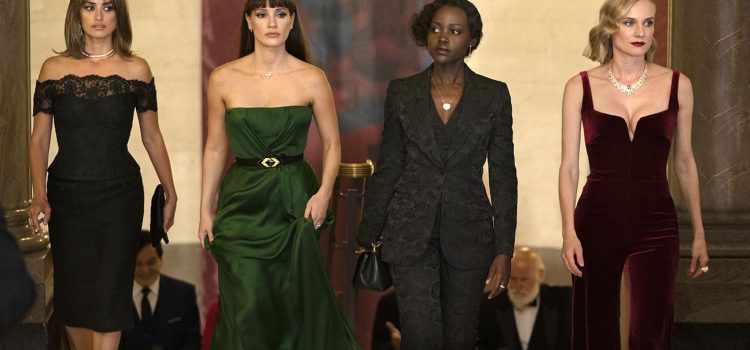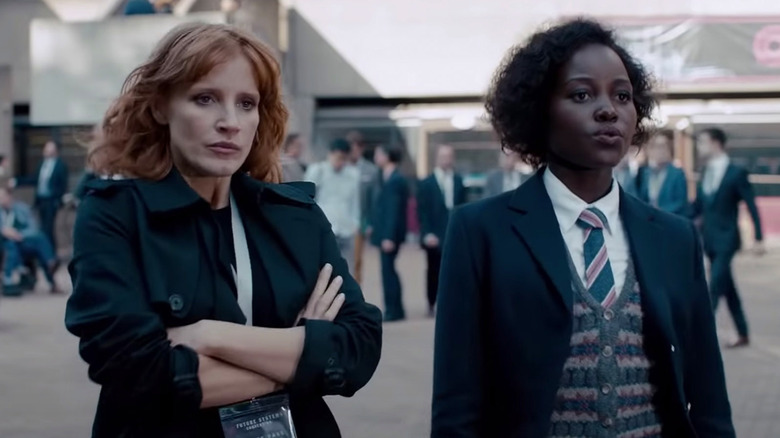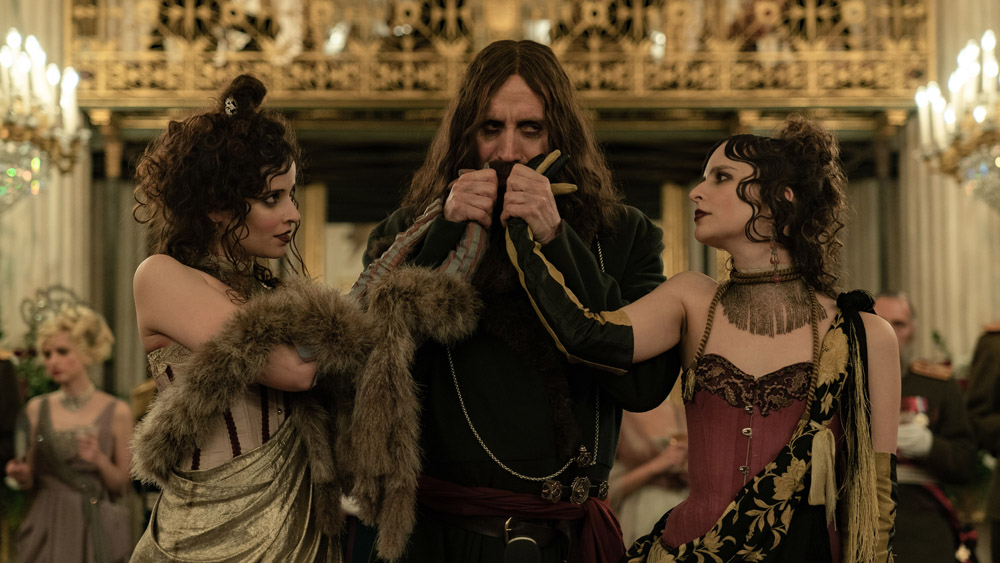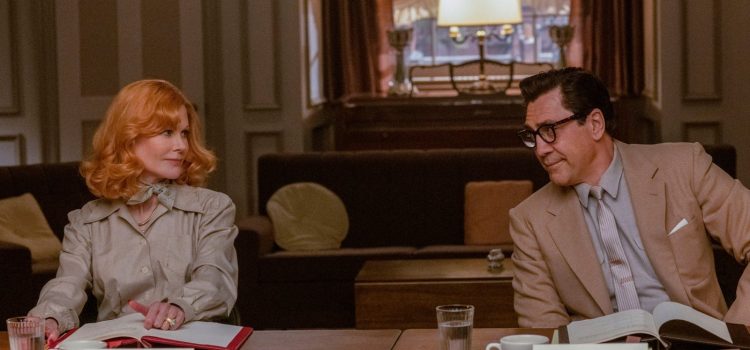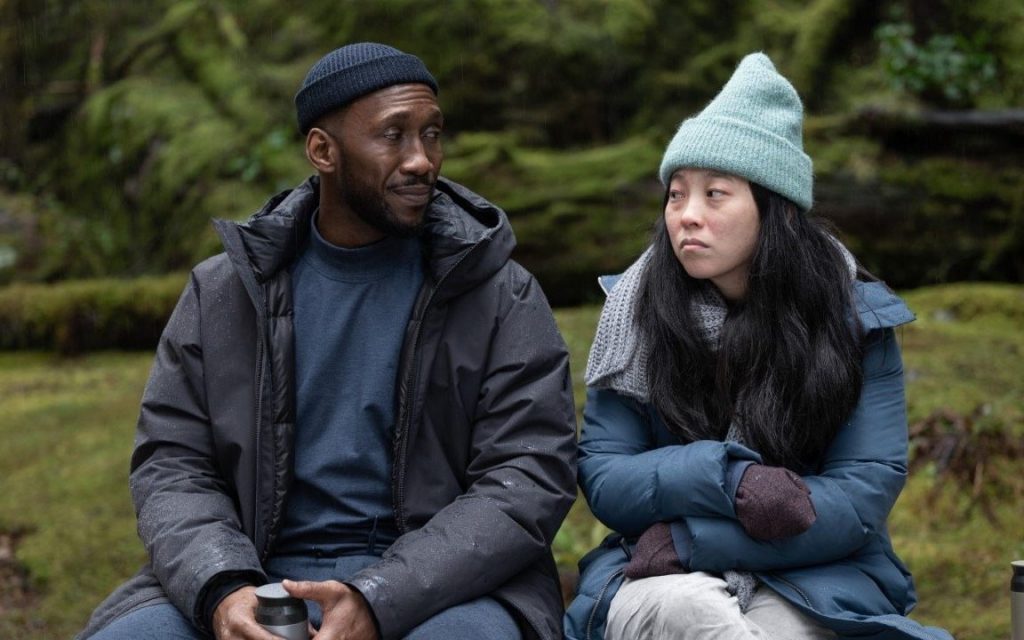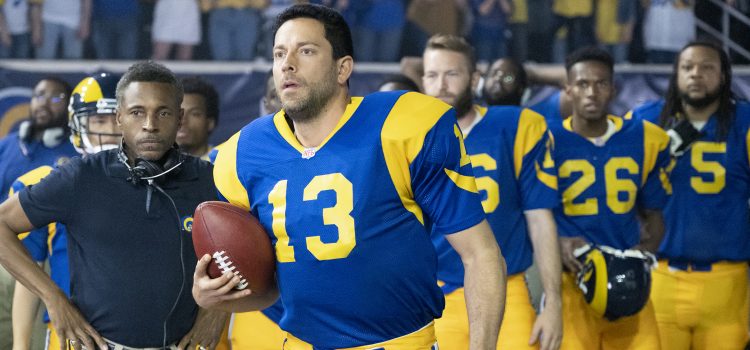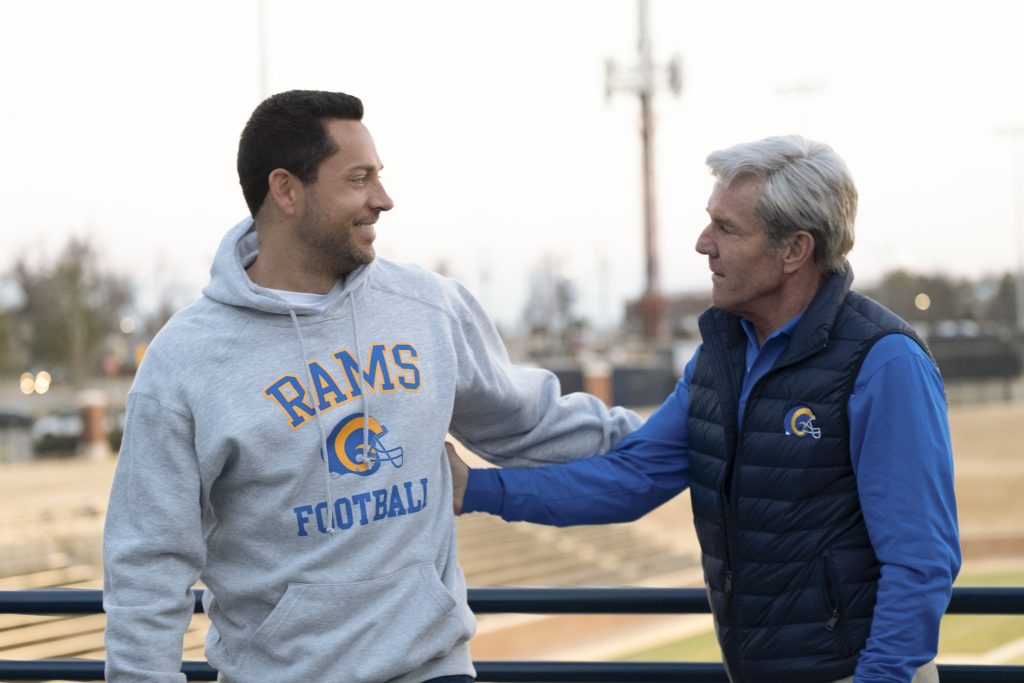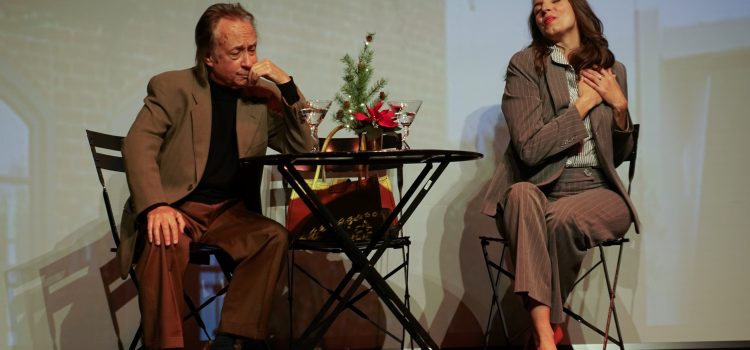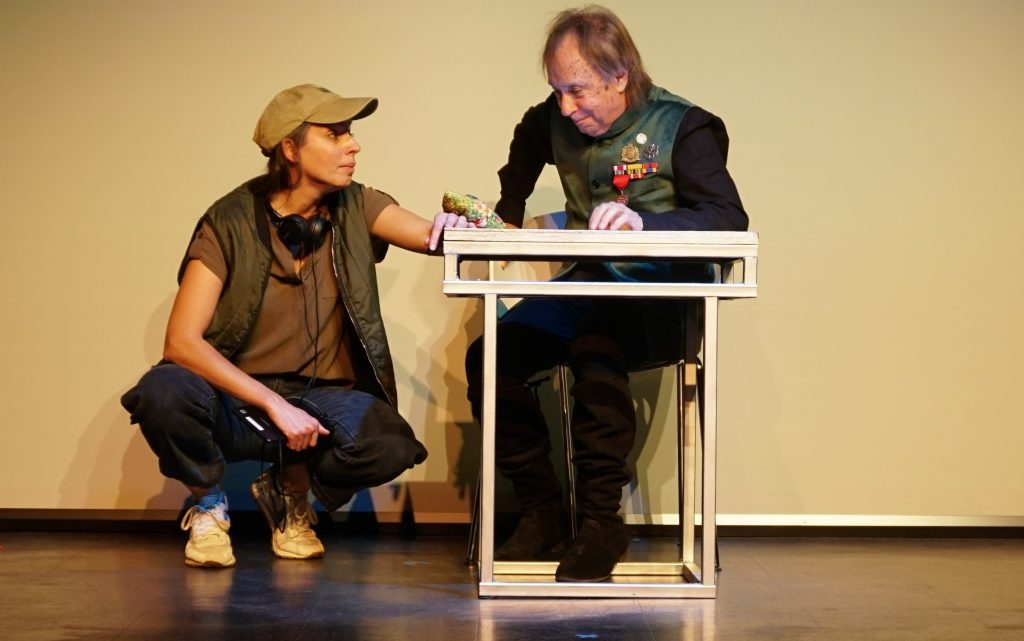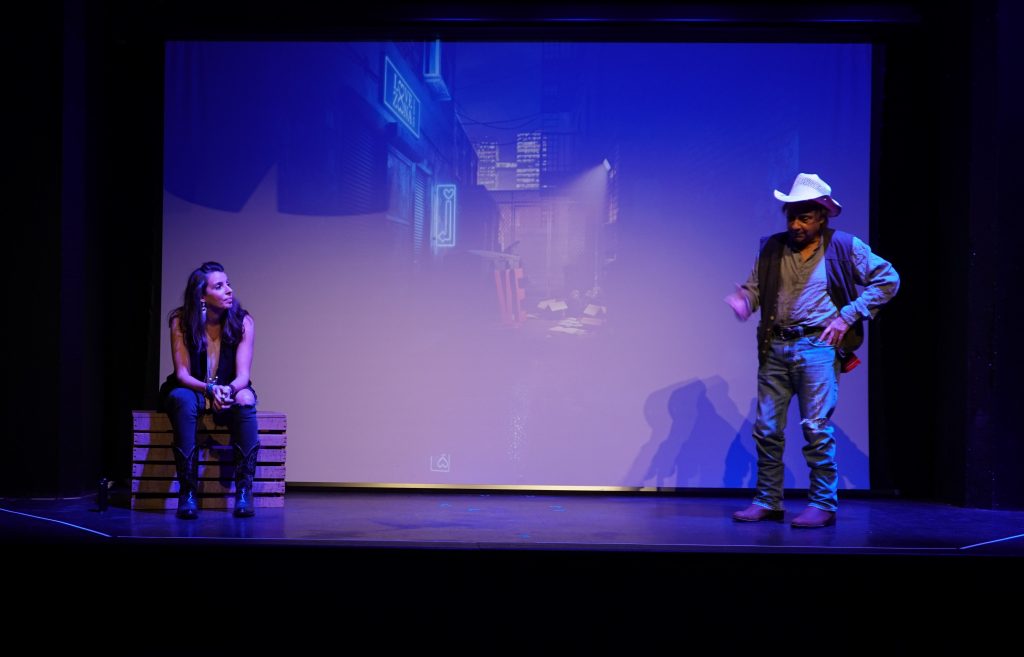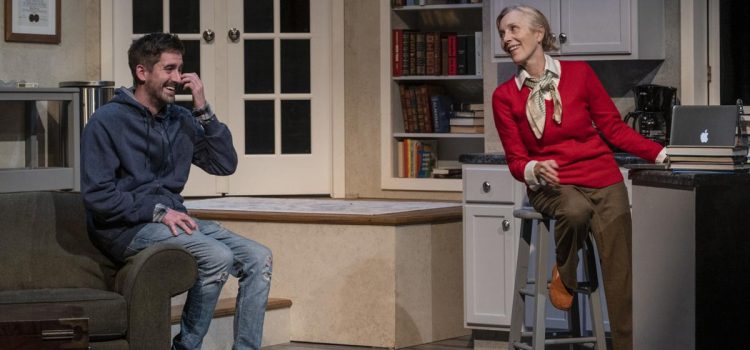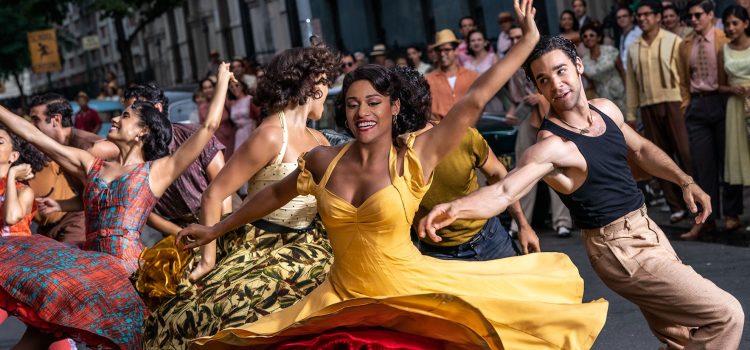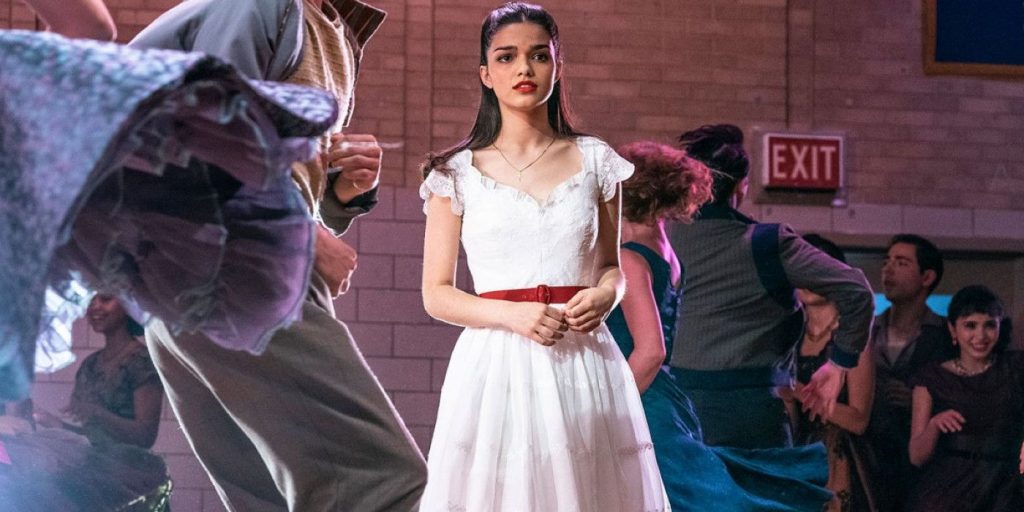By Lynn Venhaus
“What’s your favorite scary movie?” Uh-oh.
If hearing that menacing modified voice on the other end of a landline (!) sends shivers down your spine, you may be pleasantly surprised by this “Scream,” for it delivers on the franchise’s terror and laughs.
Especially the opening scene, which skillfully amplifies the suspense, only with a couple different twists. The new home-alone heroine Tara (Jenna Ortega, of “Yes Day”) says she likes “elevated horror,” such as the 21st century game-changers “The Babadook,” “It Follows” and “Hereditary.” Touche!
But the iconic “Scream” world is among the highest-rated and most popular B-movies, those dubbed “slasher” because of the high body count, and they do not wander out of that lane here.
Round 5 is excessively stabby – those squeamish about pools of blood are warned – and the deft editing by Michel Aller puts the thrill in thriller. Why Wes Craven’s innovative original stood out in 1996 is because it flipped the formula with a wink and a smile but didn’t skimp on the scares.
|Twenty-five years after the original killing spree in Woodsboro, a new killer begins a series of murders, and first-target and ‘final girl’ Sidney Prescott (Neve Campbell) returns to help find out why that creepy Ghostface mask is back.
So is the distinct malevolent voice of Roger L. Jackson. Fasten your seatbelts, and we’re off on a nostalgic wild ride, waiting to see if the new team has the right stuff. That’s the thing with series – fans are very invested and vocal, and these filmmakers know this – and run with it, mock it, and set up their own path with the serial-killer curse in the sleepy small-town of Woodsboro.
Hotshot co-directors Matt Bettinelli-Olpin and Tyler Gillett, who made the cheeky “Ready or Not” in 2020 and are part of a film collective called Radio Silence, are obviously fond of Craven, who died in 2015. Astute fans of scary movie tropes, they are inspired enough to craft a quick-witted reboot-sequel hybrid.
At once fresh and familiar, the ‘requel’ doesn’t reinvent the slasher horror genre in the way Craven did, but its playful poking fun at how self-aware it is helps smooth over its shortcomings.
Emulating the old tricks and jolts, this thriller has clever reveals, very gory and gruesome murders, snarky humor, and well-orchestrated tension.
Without a number, this fifth bold and brazen installment may be the most brutal, funniest, and is even more meta than “The Matrix: Resurrections.”
Its cynical commentary on internet fandom and social media outrage over major franchise missteps slyly riffs on David Gordon Green’s rekindled “Halloween” and Rian Johnson’s “The Last Jedi” chapter of the new “Star Wars” trilogy.
Bettinelli-Olpin and Gillett succeed in how self-aware this is, as do the screenwriters Guy Resick (also of “Ready or Not”) and James Vanderbilt, who wrote “Zodiac,” “White House Down” and the two Andrew Garfield “Spider-Man” movies.
However, getting the surviving original characters back together – Sidney Prescott (Neve Campbell), Gale Weathers (Courtney Cox) and Dewey Riley (David Arquette) – seems to be an opportunity squandered.
They’ve been an enduring trio since 1996, including sequels in 1997, 2000 and 2011, so they lend a legitimacy to the new one.
Ex-sheriff Dewey is a bigger part of the story this time – and while a welcome sight, he’s a sad shell of his former self. The quirky Arquette plays the retired and reclusive lawman both for laughs and pathos. But the trio’s much-too-brief insertion as supporting players doesn’t do them, or their legacy, justice.
As in the previous four, the main roster is filled with screen-savvy young talent who engage as best they can, given the structure limitations. Nevertheless, we should care more about the two sisters at the center — Tara is the younger sister to Samantha, capably portrayed by Melissa Barrera (Vanessa in “In the Heights”) as somewhat of a mess.
She’s been carrying a big secret around with her, so she acted up in high school, tarnished her reputation, and skedaddled out of town. It must be an in-joke that she moved to Modesto, not exactly ‘bright lights, big city,” and works at a bowling alley.
When she gets a call that her estranged sister’s been attacked, Sam rushes home with her boyfriend Richie (Jack Quaid) in tow. He’s never seen a “Stab” movie – the faux franchise based on what happened in Woodsboro that was filming in the first sequel. For the record, “Stab” is up to seven movies referenced here.
Richie gets up to speed quickly. As Sam reconnects to her past, the screenwriters introduce us to the new characters that have links to the old gang. Twins Mindy ( Jasmin Savoy Brown) and Chad (Mason Gooding) are the niece and nephew of victim Randy Meeks (Jamie Kennedy) and Amber (Mikey Madison) lives in the former home of killer Billy Loomis’ accomplice Stu Macher (Matthew Lillard)
Kevin Williamson, who created the original characters that launched many a career, was back for the second and fourth films, and is a current executive producer. He had a knack for capturing youth behavior and culture – and that hallmark continues, even with more jaded kids. His stamp is evident. After all, he went on to create “Dawson’s Creek” in 1998, which ran for six seasons (Does anyone else think the offspring of Meg Ryan and Dennis Quaid looks like Pacey?) – and develop “The Vampire Diaries” in 2009, which ran for eight seasons.
The teen party scenes, a staple, propel the funhouse jumps. A character goes into the basement alone! A character says he’ll be right back! The kids generally pay for ridiculous decisions.
And we all know what happens when characters open doors, cabinets, and refrigerators. In one of the best scenes, Wes Hicks (Dylan Minnette), son of Sheriff Judy Hicks (Marley Shelton, another returnee), filmmakers ingeniously stretch it out as he prepares for dinner.
One of my hesitations about embracing these tales fully is that I never totally buy into the whodunit. I like how they get there, but I’m usually let down by the identity and motivations of the murderers. There are many dots to connect and sometimes they don’t.
Will this movie set sequels in motion? Time will tell, but we need to care about the new characters as much as we did the core group
One must remember what the horror movie landscape was like in the 1990s to appreciate how groundbreaking “Scream” was – a lackluster crop of stale Jason Voorhees, Michael Myers, and Freddy Krueger sequels. But after “Scream” rejuvenated the genre, M. Night Shamylan introduced “The Sixth Sense” in 1998 and “The Blair Witch Project” kicked off the found-footage subgenre in 1999.
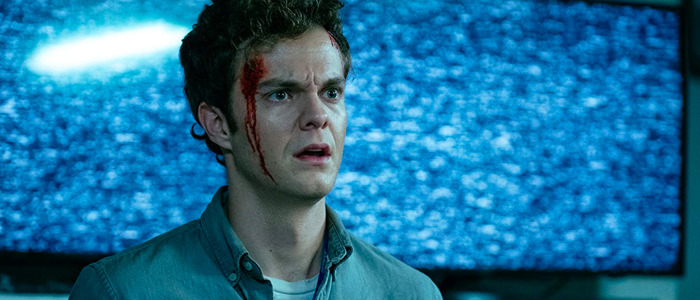
Lessons will hopefully be learned about annoyance over cash-grab sequels that they make a point about so well.
“Scream” is a 2022 horror thriller that is fifth in the series. Directed by Matt Bettinelli-Olpin and Tyler Gillett, it stars Neve Campbell, Courtney Cox, David Arquette, Melissa Barrera, Jenna Ortega and Jack Quaid. Rated R for strong bloody violence, language throughout and some sexual references, its runtime is 1 hour, 54 minutes. It opens only in theaters on Jan. 14. Lynn’s Grade: B.

Lynn (Zipfel) Venhaus has had a continuous byline in St. Louis metro region publications since 1978. She writes features and news for Belleville News-Democrat and contributes to St. Louis magazine and other publications.
She is a Rotten Tomatoes-approved film critic, currently reviews films for Webster-Kirkwood Times and KTRS Radio, covers entertainment for PopLifeSTL.com and co-hosts podcast PopLifeSTL.com…Presents.
She is a member of Critics Choice Association, where she serves on the women’s and marketing committees; Alliance of Women Film Journalists; and on the board of the St. Louis Film Critics Association. She is a founding and board member of the St. Louis Theater Circle.
She is retired from teaching journalism/media as an adjunct college instructor.


